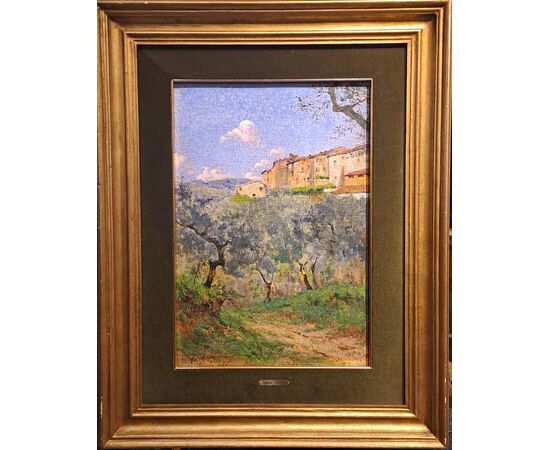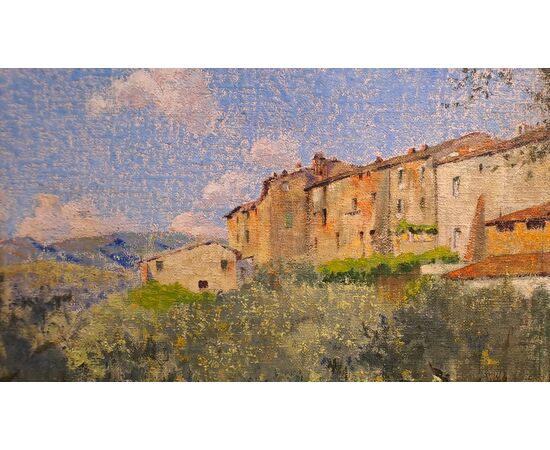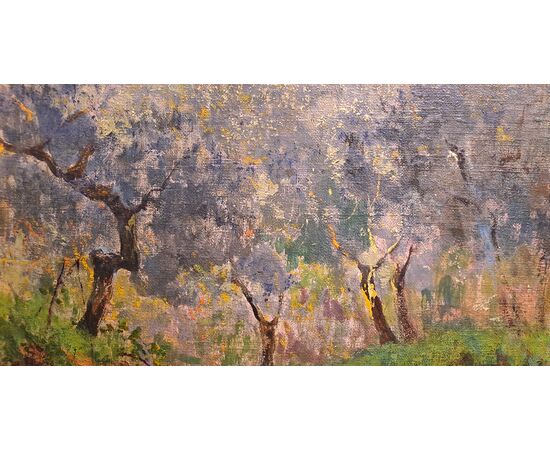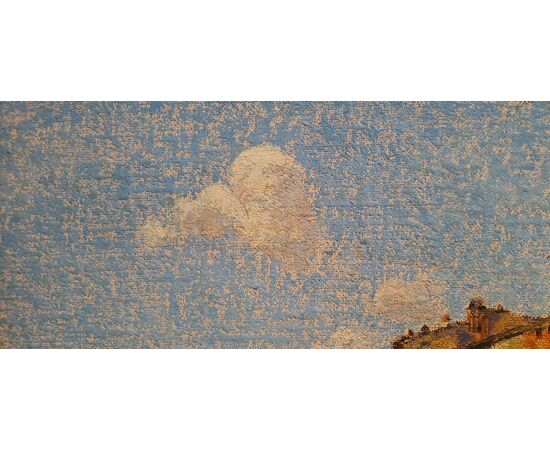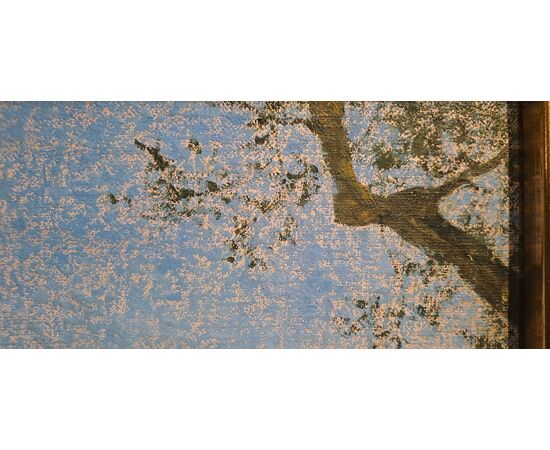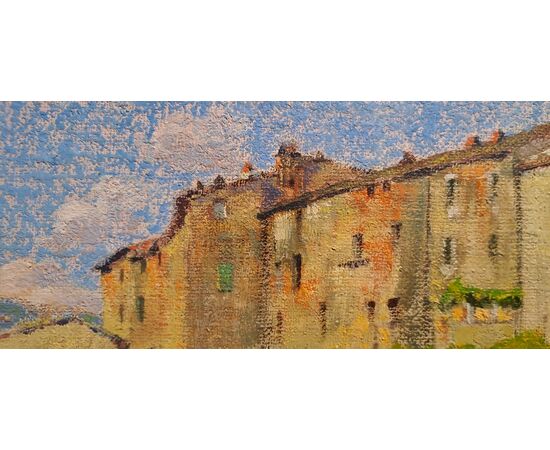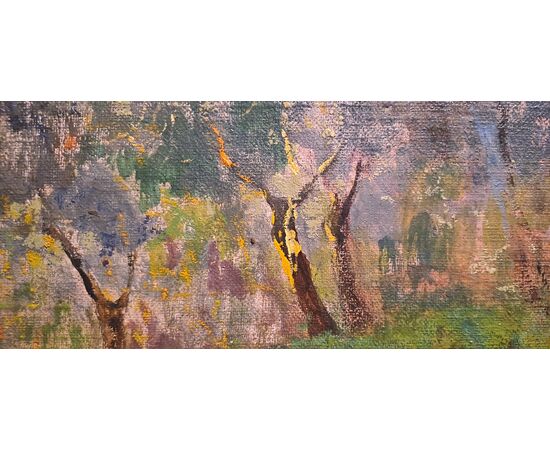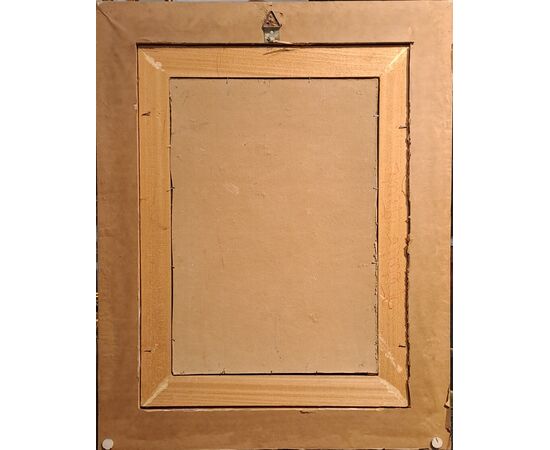Olive Grove in Tuscan Landscape - Adolfo Tommasi (1851 - 1933)
Title: Olive Grove in Tuscan Landscape
Artist: Adolfo Tommasi (Livorno 1851 – Florence 1933)
Technique and Support: Oil on canvas board. Signed lower left "Adolfo Tommasi".
Dimensions: 56 x 71 cm with frame, 31 x 46 cm the painting.
Description of the Artwork
This fascinating work by Adolfo Tommasi, a well-known Macchiaioli and post-Macchiaioli painter, captures a typical Tuscan landscape on a sunny day. The painting is an excellent example of the artist's stylistic maturity, characterized by a vibrant brushstroke and particular attention to light and atmospheric variations.
The foreground is dominated by lush vegetation, with a path winding through vigorous olive trees with dark trunks and silvery leaves, rendered with textural touches of green, gray and blue. The brushstroke is charged and fragmented, typical of its evolution towards a more personal language close to the impressionist currents.
The background features a picturesque village, whose facades, illuminated by warm light, vary in shades of ocher yellow and burnt sienna. The clear horizon line and the profile of the buildings create a chromatic and compositional contrast with the dynamism of the vegetation in the foreground.
The sky is a vibrant blue dotted with white cumulus clouds, made with dense brushstrokes that enhance its texture. The skillful use of light, which filters through the foliage of the olive trees and caresses the walls of the village, gives the work a feeling of quiet and deep harmony with nature.
Biographical Notes on the Artist
Adolfo Tommasi (Livorno 1851 – Florence 1933)
Adolfo Tommasi was a key figure in the Tuscan artistic scene between the end of the 19th and the beginning of the 20th century. Belonging to a wealthy family, he was the cousin of the painters Angiolo and Ludovico Tommasi.
Training and Macchiaiola Influence: Initially started with commercial studies, he soon dedicated himself to painting, training at the Academy of Fine Arts in Florence with Károly Markó the Younger, who introduced him to landscape painting. The real turning point came with the friendship and assiduous attendance of Silvestro Lega, the Macchiaioli master, who influenced Tommasi by pushing him towards a more naturalistic painting and study from life of the Tuscan countryside.
Stylistic Evolution: After an initial period linked to the solid Macchiaiola chromatic conception, his style evolved, particularly towards the end of the 1880s, opening up to impressionist experiences. His works began to capture atmospheric variations and light effects with greater attention, as can be seen in the vibrant brushstroke of this painting.
Recognition: He exhibited regularly at the exhibitions of the Florentine Promoter, in Milan, Turin, Genoa and Rome. His skill was recognized with the purchase of the work Primavera by Umberto I for the Gallery of Modern Art of Florence (Palazzo Pitti) in 1892. He was also an appreciated watercolorist, winning the gold medal at the International Watercolor Exhibition in Milan in 1893.
Themes: His production is mainly composed of Tuscan and Ligurian landscapes, scenes of rural life and genre views, often permeated by a poetic lyricism, also thanks to his friendship with the poet Giovanni Pascoli.
Adolfo Tommasi's works are now kept in important public collections, including the National Gallery of Modern and Contemporary Art in Rome, the Gallery of Modern Art of Palazzo Pitti in Florence, and the Giovanni Fattori Civic Museum in Livorno.

